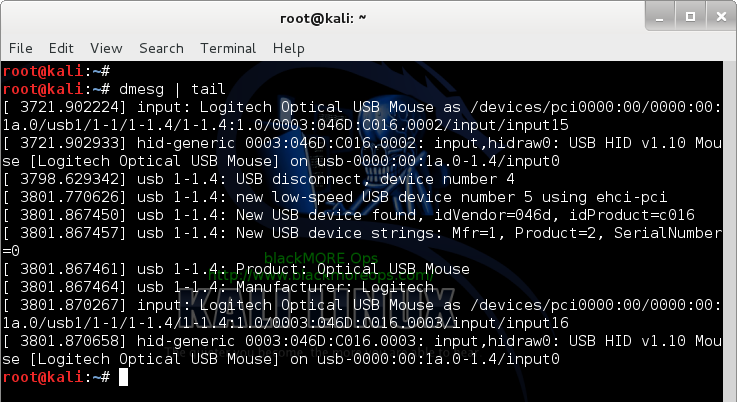
Troubleshooting wireless driver issues in Linux can be a frustrating. Installing Kali Linux / Troubleshooting. You might want to update pci ids and usb ids. Our Picks for Top Linux Compatible USB Wireless. To use the newer 802.11ac WiFi protocols with Linux. The Driver may need to be loaded with the command “apt-get install. 78 thoughts on “ Best Kali Linux Compatible USB Adapter. Including Kali Linux, Wireless. This guide shows you how to connect to WiFi network from command line in Linux. My Alfa wireless USB adapter). That command adds an. Install Kali Linux on.

I installed Kali Linux on my Sony Vaio laptop (model number SVF142C1WW), but I had no wireless out of the box. Ethernet works fine, and I can connect to wireless networks normally from Windows running on the same machine.
I found on Google which suggested I install the compatible wireless driver. I downloaded it from, extracted it to ~/Desktop and ran the following commands: $ cd desktop $ cd filenameofthatextracted folder $ make unload $ make load After these commands, my wireless seems to be recognized (see iwconfig output below), but I can't see any available wireless networks. Also, the driver disappears after restarting, and I have to run the commands again and reinstall to get the NIC to show up in iwconfig again. Relevant information: root@Light:~# iwconfig wlan1 IEEE 802.11abgn ESSID:off/any Mode:Managed Access Point: Not-Associated Tx-Power=20 dBm Retry short limit:7 RTS thr:off Fragment thr:off Encryption key:off Power Management:off eth0 no wireless extensions. Lo no wireless extensions. Wlan0 IEEE 802.11abgn ESSID:off/any Mode:Managed Access Point: Not-Associated Tx-Power=20 dBm Retry short limit:7 RTS thr:off Fragment thr:off Encryption key:off Power Management:off hwsim0 no wireless extensions.
$ lspci -vq 07: 00. 0 Network controller: Broadcom Corporation BCM43142 802.
11b/g/n (rev 01) Subsystem: Foxconn International, Inc. Device e071 Flags: bus master, fast devsel, latency 0, IRQ 16 Memory at 90700000 (64-bit, non-prefetchable) [size=32K] Capabilities: [40] Power Management version 3 Capabilities: [58] Vendor Specific Information: Len=78 Capabilities: [48] MSI: Enable- Count=1/1 Maskable- 64bit+ Capabilities: [d0] Express Endpoint, MSI 00 Capabilities: [100] Advanced Error Reporting Capabilities: [13c] Virtual Channel Capabilities: [160] Device Serial Number 00-00-87-ff-ff-7c-34-23 Capabilities: [16c] Power Budgeting Kernel driver in use: bcma-pci-bridg I found one more thing, and now I'm totally confused.
See, while installing Kali Linux this is the menu you get in the beginning: Kali - boot Non Persistent Mode Kali - Boot Persistent Kali - Failsafe Kali Forensics - No Drive or Swap Mount Kali Graphical install Kali Text install I went into the option Kali Graphical Install to install Kali Linux. I believed to run live Kali, and I have to go in Kali - Boot Persistent. I went into that, and I got Kali desktop.
And I found out that Wi-Fi drivers were perfectly fine and they were working well. I can connect to any Wi-Fi connections and all Wi-Fi connections were showing. What is this? And there is one more thing. While installing Kali Linux, inbetween I got an error message saying the following. [!DETECT NETWORK HARDWARE] Some of your hardware needs non-free firmware files to operate.
The firmware can be loaded from removable media such as a USB stick or floppy. The missing firmware files are: rtl_nic/rtl8168e3.fw But after I ran some update and upgrade commands, it is present in /lib/firmware.
How many of you failed to connect to WiFi network in Linux? Did you bumped into issues like the followings in different forums, discussion page, blogs? I am sure everyone did at some point. Following list shows just the results from Page 1 of a Google search result with “Unable to connect to WiFi network in Linux” keywords. • • • • • • • • • Following guide explains how you can connect to a WiFi network in Linux from command Line. This guide will take you through the steps for connecting to a WPA/WPA2 WiFi network.
In case you’ve only got wired connection only, you can use this guide to. Gta San Andreas Zima Download. You have really upped the knowledge level/detail since this site started great job I think it is great you focused on iw in this post.
You should now try and do a primer on “ip” (as in ip link, ip addr, ip route, ip tunnel) that is a serious headache to try and figure out– even if taken in small chunks! One thing I am trying to right now is figure out how to create a bash script that creates a virtual wireless monitor, then changes the mac address on each to an identical new address. Part of figuring this out (while learning as much as possible), is to use the “iw” command instead of “airmon-ng”. Essentially, all airmon-ng really does is create an additional (virtual?) wireless interface using the same hardware NIC. So you can create this new interface with “iw dev wlan1 interface add mon1 type monitor” at the command line. (with “wlan1” being (for me) my Alfa wireless USB adapter). That command adds an interface called “mon1” and sets it to monitor mode (which is the same as “PROMISC” when running ifconfig).